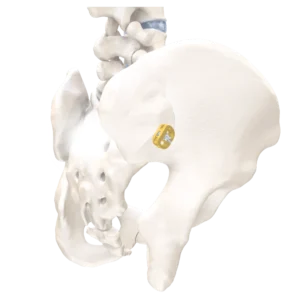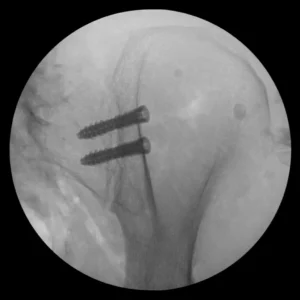Minimally Invasive Sacroiliac Joint Fusion
Minimally Invasive Sacroiliac Joint Fusion
Minimally Invasive Sacroiliac Joint Fusion: A Solution for Lasting Sacroiliac Joint Pain Relief in Arizona
Sacroiliac joint pain affects many people in Arizona, causing discomfort in the lower back, hips, and legs. When conservative treatments fail, sacroiliac joint fusion offers a long-term solution. Minimally invasive sacroiliac joint fusion involves using small implants to stabilize the joint and stop painful movement. At Red Butte Pain Solutions, we provide cutting-edge sacroiliac joint fusion techniques to help patients find lasting relief.
In this article, we will explore sacroiliac joint fusion, the types of implants available, and how this procedure can help patients with sacroiliac joint dysfunction.
What Is Sacroiliac Joint Dysfunction?
The sacroiliac joint (SI joint) connects the spine to the pelvis. This joint supports weight transfer between the upper and lower body while allowing limited movement. Sacroiliac joint dysfunction occurs when the joint becomes inflamed or damaged, leading to significant pain and reduced mobility. Patients often experience lower back pain that radiates to the buttocks, hips, or legs.
Sacroiliac joint dysfunction has various causes, including:
-
- Injury or trauma: A fall, accident, or sudden impact can damage the sacroiliac joint.
- Degenerative changes: Osteoarthritis and other degenerative conditions wear down the joint over time.
- Pregnancy-related changes: Hormonal changes during pregnancy can loosen the ligaments around the sacroiliac joint.
- Overuse: Repetitive movements or heavy lifting can strain the joint.
When sacroiliac joint dysfunction becomes severe, minimally invasive sacroiliac joint fusion offers a permanent solution by stabilizing the joint and stopping painful movement.
Minimally Invasive Sacroiliac Joint Fusion: How It Works
Minimally invasive sacroiliac joint fusion involves inserting small implants into the sacroiliac joint to stabilize it and prevent movement that causes pain. The procedure is typically performed under general anesthesia or sedation, and it uses small incisions to minimize tissue damage. Imaging guidance helps ensure the precise placement of implants.
During the procedure, your surgeon will use a small incision to access the sacroiliac joint. Using fluoroscopy (real-time X-ray), they will guide the specialized implant into the joint to secure it in place. By limiting movement in the joint, the fusion reduces pain and inflammation.
Most patients experience significant improvement in pain and function after a minimally invasive sacroiliac joint fusion procedure. Recovery times vary, but patients generally return to daily activities more quickly compared to traditional open surgery.
Types of Sacroiliac Joint Fusion Implants
Various implants are available for sacroiliac joint fusion, each with its benefits. Choosing the right type of implant depends on your condition, anatomy, and preferences. Below, we’ll explore three common types of sacroiliac joint fusion implants: intraarticular percutaneous implants, transfixing screws, and SI Bone implants.
Intraarticular Percutaneous Implants
Intraarticular percutaneous implants are small devices inserted directly into the sacroiliac joint. These implants stabilize the joint by preventing movement within the joint space. The procedure involves minimal disruption to surrounding tissue, and it is performed through a small incision.
The key benefit of intraarticular percutaneous implants lies in their minimally invasive nature. Patients typically experience shorter recovery times and reduced post-operative pain compared to more invasive approaches. These implants also provide lasting pain relief by securing the joint and stopping painful motion.

Transfixing Screws
Transfixing screws provide another option for sacroiliac joint fusion. During this procedure, the surgeon inserts large screws through the sacrum and into the ilium, effectively “locking” the joint in place. These screws hold the sacroiliac joint in position, preventing the movement that causes pain.
Transfixing screws offer strong stabilization of the sacroiliac joint. The procedure usually requires a slightly larger incision compared to intraarticular percutaneous implants, but the results provide excellent joint fixation. Many patients experience long-term relief from sacroiliac joint dysfunction following a transfixing screw fusion.

Benefits of Minimally Invasive Sacroiliac Joint Fusion
Minimally invasive sacroiliac joint fusion offers several benefits compared to traditional open fusion surgery:
-
- Smaller incisions: The procedure uses small incisions, reducing scarring and damage to surrounding tissue.
- Shorter recovery times: Most patients recover more quickly after minimally invasive surgery, returning to normal activities sooner.
- Reduced post-operative pain: The minimally invasive technique causes less tissue damage, resulting in less pain after surgery.
- Long-lasting relief: By stabilizing the sacroiliac joint, fusion provides permanent relief from pain caused by sacroiliac joint dysfunction.
Who Should Consider Sacroiliac Joint Fusion?
Minimally invasive sacroiliac joint fusion may be the right choice for patients who:
-
- Have tried other treatments without relief, such as physical therapy, medications, or sacroiliac joint injections.
- Experience chronic lower back pain related to sacroiliac joint dysfunction.
- Have pain that worsens with movement, such as standing, sitting, or walking.
- Struggle with daily activities due to sacroiliac joint pain and reduced mobility.
If you’ve exhausted other treatments and still suffer from sacroiliac joint pain, minimally invasive sacroiliac joint fusion could provide the lasting relief you need.
What to Expect During the Procedure
Minimally invasive sacroiliac joint fusion typically takes one to two hours, depending on the complexity of the case and the type of implant used. The procedure occurs in an outpatient setting, so most patients go home the same day.
Here’s what to expect during the procedure:
-
- Preparation: The surgical team will position you on the operating table, and anesthesia will be administered.
- Incision: The surgeon will make a small incision near the sacroiliac joint.
- Imaging guidance: Using fluoroscopy, the surgeon will guide the implant into the sacroiliac joint.
- Implant insertion: The implant, whether intraarticular percutaneous, transfixing screws, or iFuse, will be securely placed into the joint.
- Closing the incision: After inserting the implant, the surgeon will close the incision with sutures or surgical glue.
Recovery After Sacroiliac Joint Fusion
Recovery from sacroiliac joint fusion varies, but most patients can resume light activities within two to three weeks. Full recovery takes about three to six months, depending on the type of implant used and your individual healing process.
During recovery, your doctor may recommend physical therapy to help restore strength and flexibility. You’ll gradually return to normal activities, and many patients experience significant pain relief within weeks of surgery.
Risks of Sacroiliac Joint Fusion
While sacroiliac joint fusion offers many benefits, it’s important to understand the potential risks. These include:
-
- Infection: Like any surgical procedure, sacroiliac joint fusion carries a risk of infection. Your surgeon will take precautions to minimize this risk.
- Implant failure: In rare cases, the implant may not provide sufficient stabilization, requiring additional surgery.
- Nerve injury: Nerves surrounding the sacroiliac joint can be damaged during surgery, although this risk is low with experienced surgeons.
At Red Butte Pain Solutions, we minimize these risks through careful planning and advanced surgical techniques, ensuring the safest and most effective outcomes for our patients.
Why Choose Red Butte Pain Solutions for Sacroiliac Joint Fusion in Arizona?
At Red Butte Pain Solutions, we specialize in treating sacroiliac joint dysfunction with minimally invasive sacroiliac joint fusion. Our Arizona-based team uses advanced techniques and cutting-edge implants, such as intraarticular percutaneous implants and transfixing screws to provide lasting pain relief. We tailor each treatment to the specific needs of our patients, ensuring optimal results.
Our patients benefit from:
-
- Comprehensive care: From diagnosis to recovery, we support our patients every step of the way.
- Expertise in sacroiliac joint dysfunction: We have years of experience treating sacroiliac joint pain and dysfunction.
- Minimally invasive techniques: Our team uses state-of-the-art implants and techniques to provide the best outcomes with the least recovery time.
If sacroiliac joint pain has limited your mobility and quality of life, minimally invasive sacroiliac joint fusion could provide the relief you need. At Red Butte Pain Solutions, we help patients throughout Arizona find long-lasting solutions for sacroiliac joint dysfunction and back pain.
Contact us today at 602-633-4334 or Pre-Register to schedule a consultation and take the first step toward a pain-free life.
